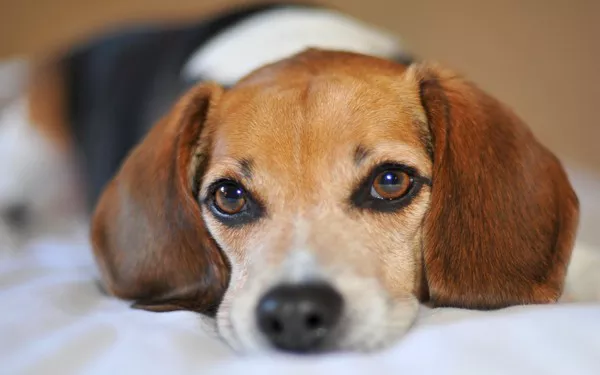Training a puppy can be one of the most rewarding experiences for a pet owner. Among the many breeds, Basset Hounds stand out with their distinctive looks and lovable personalities. However, like any puppy, Basset Hounds can exhibit undesirable behaviors, including biting. Understanding how to effectively train your Basset Hound puppy to stop biting is crucial for a harmonious relationship between you and your furry friend. In this article, we’ll delve into the reasons behind biting, effective training techniques, and the importance of patience and consistency in the training process.
Understanding the Basset Hound
Before we dive into training methods, it’s essential to understand the Basset Hound as a breed. Known for their long ears, droopy eyes, and stocky bodies, Basset Hounds are friendly, affectionate, and have a unique sense of smell. They were originally bred for hunting, which explains their strong instinct to track scents. This breed is usually calm and gentle, making them excellent family pets. However, their stubbornness can sometimes pose challenges during training, especially when it comes to managing behaviors like biting.
Why Do Basset Hound Puppies Bite?
Puppies, including Basset Hounds, explore the world with their mouths. Biting can be a natural behavior, but it’s essential to distinguish between playful biting and aggressive biting. Here are some common reasons why your Basset Hound puppy might be biting:
Teething: Puppies go through a teething phase, which can cause discomfort in their gums. Biting helps relieve some of that pain.
Playfulness: Puppies are playful by nature, and they often use their mouths to engage with their littermates and owners. What starts as playful nipping can quickly escalate if not properly managed.
Attention-Seeking: Sometimes, puppies bite to get attention. If they notice that biting results in play or interaction, they may continue the behavior.
Exploration: Puppies use their mouths to explore their environment. They might bite objects, including your hands or clothing, as a part of their curiosity.
Fear or Anxiety: If a puppy feels threatened or scared, it might bite as a form of defense. Understanding your puppy’s body language can help identify if this is the cause.
Recognizing these motivations will help you tailor your training approach to effectively curb biting behavior.
Training Techniques to Stop Biting
Now that we understand the reasons behind biting, let’s explore various techniques you can employ to train your Basset Hound puppy to stop biting.
1. Use Positive Reinforcement
Positive reinforcement is one of the most effective training methods for puppies. It involves rewarding desired behaviors rather than punishing undesired ones. Here’s how to implement positive reinforcement:
Identify Desirable Behaviors: Focus on behaviors you want to encourage, such as playing gently or chewing on appropriate toys.
Reward Immediately: As soon as your puppy exhibits the desired behavior, reward them with treats, praise, or affection. This immediate reinforcement helps them connect the behavior with the reward.
Use Clicker Training: Consider using a clicker as a training tool. Click when your puppy exhibits good behavior, followed by a treat. This method provides a clear signal that they did something right.
2. Redirect the Biting
Instead of reacting negatively when your Basset Hound puppy bites, redirect their energy to appropriate outlets:
Provide Chew Toys: Offer a variety of chew toys specifically designed for puppies. This gives them something to bite that is acceptable and safe.
Engage in Play: Use interactive toys, such as tug ropes or balls, to engage your puppy in play. This not only distracts them from biting but also strengthens your bond.
Teach “Leave It” Command: Teaching the “leave it” command can help you redirect your puppy’s attention when they start to bite. When they start nipping, use this command and immediately offer a toy as a distraction.
3. Implement the “Yelp” Technique
Many puppy trainers advocate the “yelp” technique, which mimics the behavior of littermates. If your puppy bites you too hard during play, react as a littermate would:
Yelp: Let out a loud, high-pitched “ow!” or “yelp!” when your puppy bites you. This sound mimics a puppy in distress and can startle them.
Pause Playtime: After yelping, stop playing and turn away for a few moments. This teaches your puppy that biting leads to the loss of attention and fun.
Resume Only When Calm: Once your puppy calms down, resume play. This reinforces that playtime is contingent on gentle behavior.
4. Create a Calm Environment
Sometimes, excessive biting can stem from overstimulation. Creating a calm environment for your puppy can help reduce biting incidents:
Limit Excitement: Avoid overly stimulating games that may cause your puppy to become too excited. Instead, engage in calm activities such as gentle tugging or training exercises.
Designate a Safe Space: Provide a quiet area where your puppy can retreat when feeling overwhelmed. This could be a cozy crate or a quiet corner with their bed and toys.
Schedule Regular Playtime: Establish a routine for playtime, walks, and training. Consistency helps puppies feel more secure and can reduce anxiety-driven biting.
5. Practice Time-Outs
Time-outs can be an effective strategy for managing biting behavior:
Immediate Response: If your puppy bites and doesn’t respond to redirection or yelping, calmly place them in a designated time-out area for a few minutes.
Short Duration: Time-outs should be brief—about two to five minutes. The goal is to help your puppy associate biting with losing playtime, not to punish them harshly.
Return After Calmness: Once your puppy calms down, bring them back to the main area and resume play or training, reinforcing good behavior.
6. Be Consistent and Patient
Consistency is key in puppy training. Everyone in your household should be on the same page regarding rules and responses to biting behavior:
Establish Clear Rules: Decide on what behaviors are acceptable and stick to them. If one person allows biting while others don’t, it will confuse your puppy.
Communicate Clearly: Use the same commands and cues consistently so your puppy can learn effectively. Mixed signals can hinder their training progress.
Stay Patient: Training takes time, especially with a stubborn breed like the Basset Hound. Celebrate small victories, and don’t be discouraged by setbacks.
7. Socialization
Socializing your Basset Hound puppy with other dogs and people can help reduce biting behavior. Proper socialization teaches your puppy how to interact appropriately:
Introduce New Experiences Gradually: Expose your puppy to different environments, sounds, and people in a controlled manner. This helps them learn how to behave in various situations.
Enroll in Puppy Classes: Consider enrolling your puppy in obedience classes where they can interact with other puppies under professional supervision. This environment encourages appropriate play and social skills.
Supervise Playdates: Organize playdates with other friendly, vaccinated dogs. Monitor their interactions to ensure that play remains gentle and non-aggressive.
8. Consult a Professional Trainer
If you’re struggling to manage your Basset Hound’s biting behavior, consider seeking help from a professional dog trainer or behaviorist:
Assess the Situation: A professional can observe your puppy’s behavior and provide tailored guidance and training strategies specific to your situation.
Group Classes: Many trainers offer group classes that provide socialization opportunities while reinforcing positive behavior. This environment can be beneficial for both you and your puppy.
One-on-One Sessions: If your puppy has severe biting issues, individualized training sessions may be more effective in addressing specific challenges.
The Importance of Understanding Body Language
Understanding your Basset Hound puppy’s body language is crucial in preventing biting incidents. Many biting behaviors can be preempted by recognizing signs of discomfort or overstimulation:
Watch for Signs of Stress: Look for signs such as lip licking, yawning, or tail tucking. These can indicate that your puppy is feeling anxious and may be more likely to bite.
Recognize Play Signals: Playful puppies often exhibit a “play bow,” where they lower their front legs while keeping their back legs upright. This is a signal that they are inviting play rather than aggression.
Know When to Step Back: If your puppy becomes overly excited or agitated during play, it’s essential to intervene before biting occurs. Take a break or redirect their energy to a toy.
Conclusion
Training your Basset Hound puppy to stop biting is a journey that requires time, patience, and understanding. Recognizing the underlying causes of biting, employing effective training techniques, and fostering a loving environment are all vital components in curbing this behavior. As a Basset Hound owner, you have the privilege of shaping your puppy’s behavior and nurturing a lifelong bond filled with love, trust, and companionship.
Remember that every puppy is unique, and what works for one may not work for another. By staying committed to your training efforts and adapting your approach as needed, you’ll not only help your puppy learn appropriate behaviors but also create a joyful, enriching experience for both of you. Ultimately, your dedication to training will lead to a well-behaved Basset Hound who is a cherished member of your family.
Related Topics:























